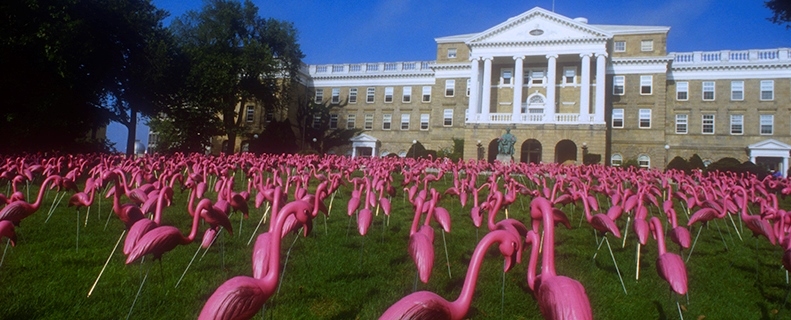We are approaching the 60th anniversary of a very important milestone that coupled the unpresuming plastic industry with the world of kitsch: the development of the pink plastic lawn flamingo. The lawn flamingo was invented by the appropriately and presciently-named Donald Featherstone. Mr. Featherstone, after graduating from the Worcester Art Museum, took a job with a plastic lawn ornament manufacturer in Leominster, MA, a town 1 hour from Cambridge Polymer Group’s headquarters. Leominster has a long history in plastic production, earning the nickname ‘Comb City’ based on its production of celluloid-based combs in the late 1800s. Injection molding also got its start in Leominster, pioneered by Samuel Foster, who made, amongst other items, injection molded sunglasses that go by the name ‘Foster Grants’. Lastly, Leominster can claim to be the home of Tupperware, the happily burping container system still in vogue.
So pink plastic lawn flamingos were a natural fit for Leominster. Fittingly, Mr. Featherstone received an Ig Nobel Prize for his work in 1996, an award that celebrates both invention and humor, with a smattering of sarcasm. As an interesting aside, Mr. Featherstone and his wife wore matching outfits for 35 years; not terribly relevant, but interesting. Although Mr. Featherstone left this mortal coil in 2015, we are comforted knowing the world he left is a bit pinker and more plasticky. The flamingos continue to appear in modern culture and on the bolder homeowner’s lawn. Students at the University of Wisconsin were treated to the sight of over 1000 plastic flamingos adorning Bascom Hill on campus in 1979, courtesy of the student government. This event prompted Madison, WI, home of the UW campus, to name the lawn flamingo its official bird in 2009.
So join the plastics world in thanking Mr. Featherstone for this unassuming but important contribution.

